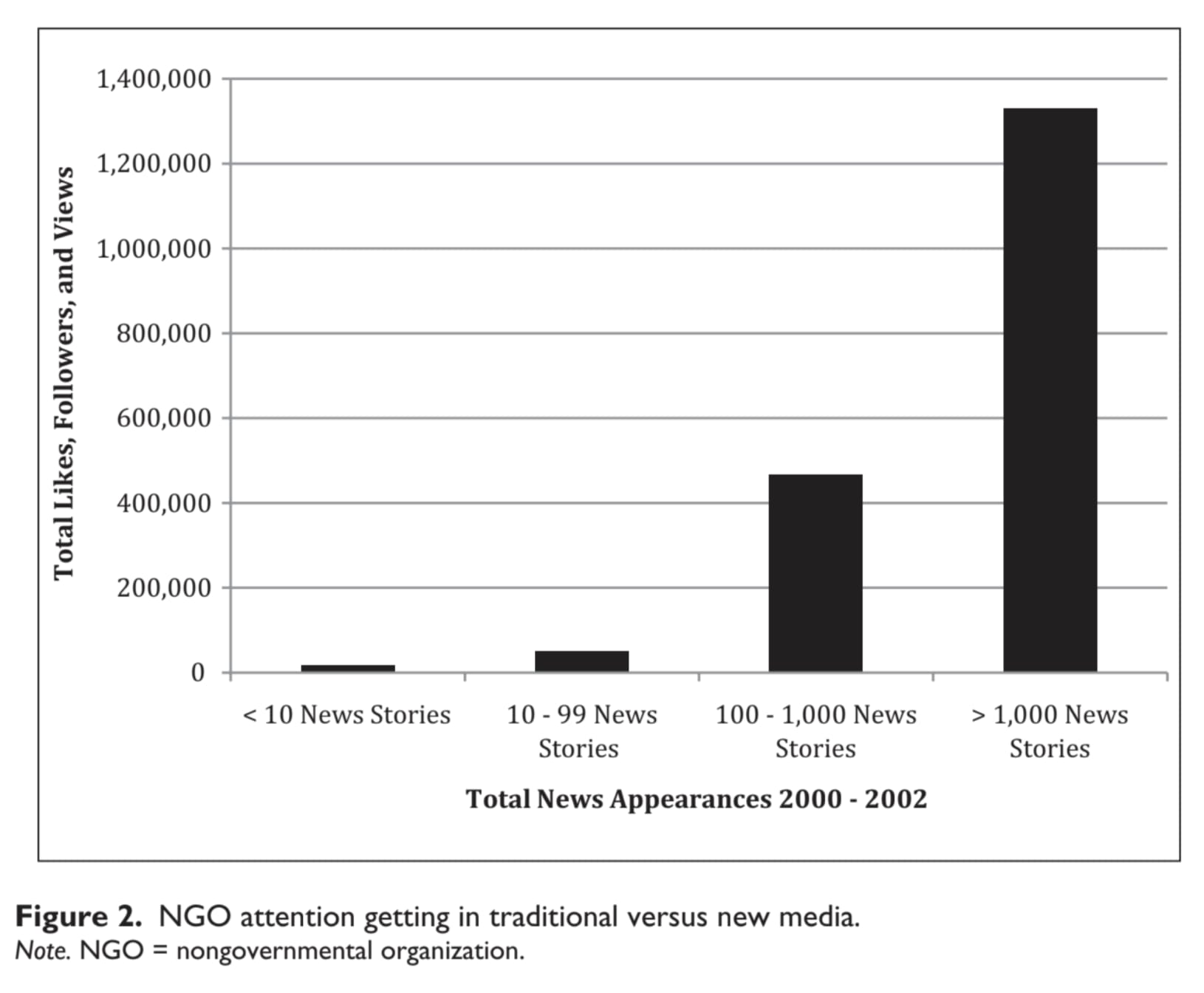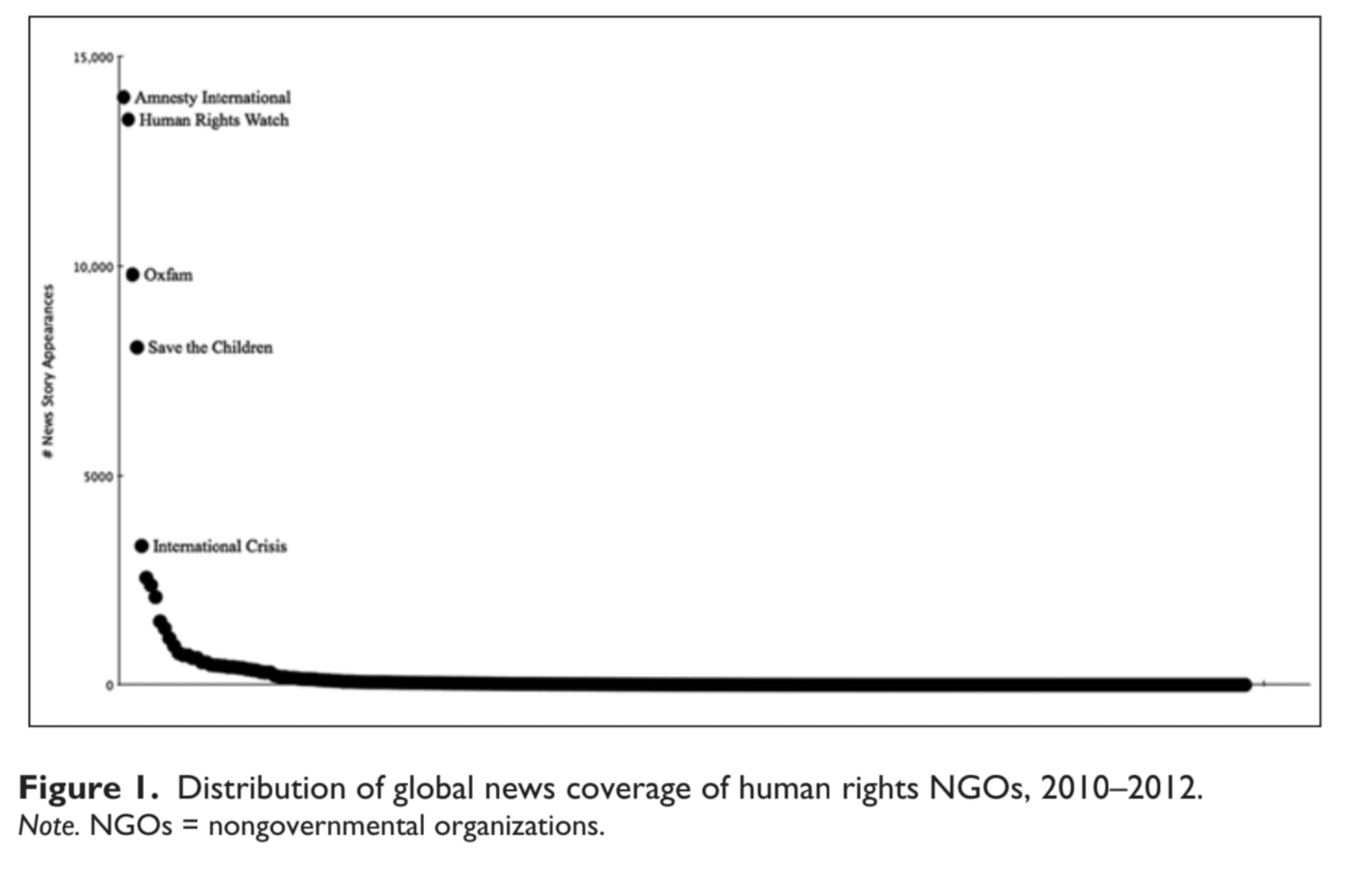The following is a digestion of the research paper "May We Have Your Attention Please? Human-Rights NGOs and the Problem of Global Communication" by A. Trevor Thrall, Dominik Stecula, and Diana Sweet (see link).
I often find academic papers way of communicating over-complicated, so I have written a little series where I digest the key points of papers that I have recently read.
In short this paper finds that: The argument that social media has opened the doors for small NGOs is a misconception (in the sense that their large-scale empirical findings do not support that social media have made it easier for smaller NGOs to reach an audience.
This paper is worth a read because: This study is old (2014). An interesting question todays research is therefore whether this has changed? (and in that case: Why - what mechanisms are in play?). In my opinion this paper offers a good baseline to understand the progress over time, which is why I have included this digestion.
Intro:
Is it easier for smaller Human Rights NGOs to reach a large audience at a low cost, when using social media (opposed to traditional media)? This paper conducts an empirical research of 257 transnational human-rights NGOs to find out.
The conclusion is that the global attention is still heavily centred on a few large and well funded NGOs (See Figure 1) and that social media (compared to conventional) does not seem to make communication more accessible for small NGOs - in fact the study suggest it might even have had a negative effect.
Argument:
Overall the argument can be summarised as: Because attention is fundamentally scarce, competition for it becomes a zero-sum game regardless of whether we are talking social or conventional media.
With other words: Attention (whether from news media or individuals) will rely on the NGOs resources, and therefore attention is expected to still be heavily concentrated on the few NGOs that have large amounts of resources.
Test and results
The study measures the amount of attention that 257 human-rights NGOs received from global news media and the public via the news and social media throughout three years from 2010-2012.
The findings support the theoretical argument and indicates that social media might even amplify the effect.
Figure 1 illustrates how news coverage is centred on a very few Human Rights NGOs:
Figure 2 illustrates how it is the same NGOs that have been most effective in getting attention traditional news media that also are more effective at getting the public’s attention through social media:

Ressources is measured by the NGOs annual budget. Media attention is measured as the number of stories in which each NGO appeared throughout the three years. Individual attention is measured as the number of of web searches on Google, followers, likes and views on YouTube, Facebook and Twitter.
Considerations:
One thing that the study does not take into account is the distinction between the different factors affecting attention. Is it for example the reputation of the NGO or the organisational resources that has the biggest effect in their competition for attention?
In further studies, it could be interesting to take into account how the type of attention differ between NGOs. It could be that for example smaller NGOs are gaining less attention, but that this attention is more effective.
The paper also argues that because attention is scarce there will only ever be a few high-profile NGOs (such as Amnesty International, Human Rights Watch etc). However, as content more targeted, things could change. Is it inevitable in the cards that NGOs will be this centralised - or could this change?
___
This post was based on a response-paper written and reviewed within a Human Rights course through my master. The paper can be found through the link in the top. I also have included perspectives to other HR studies in the comment.
Let me know how I can improve
